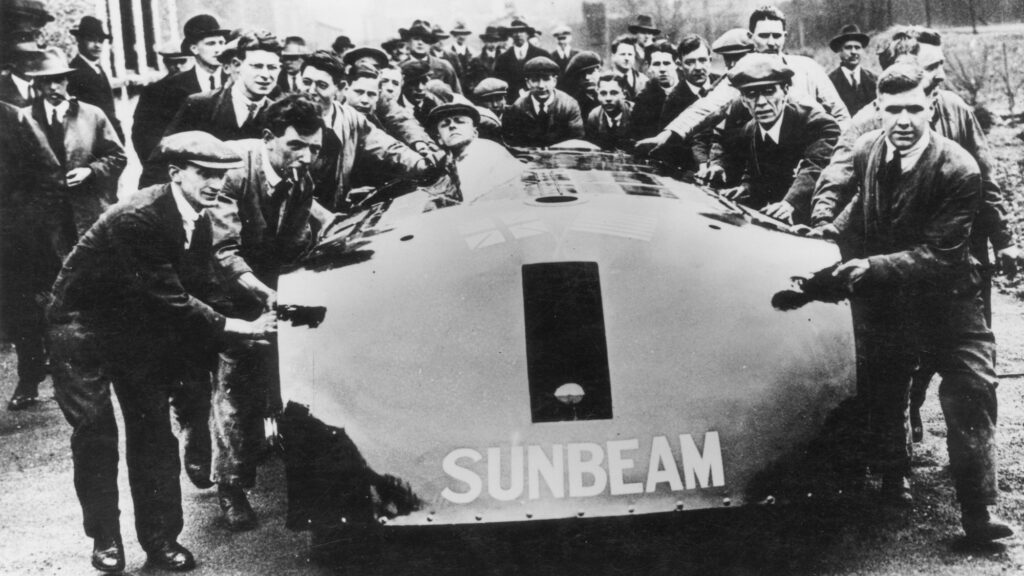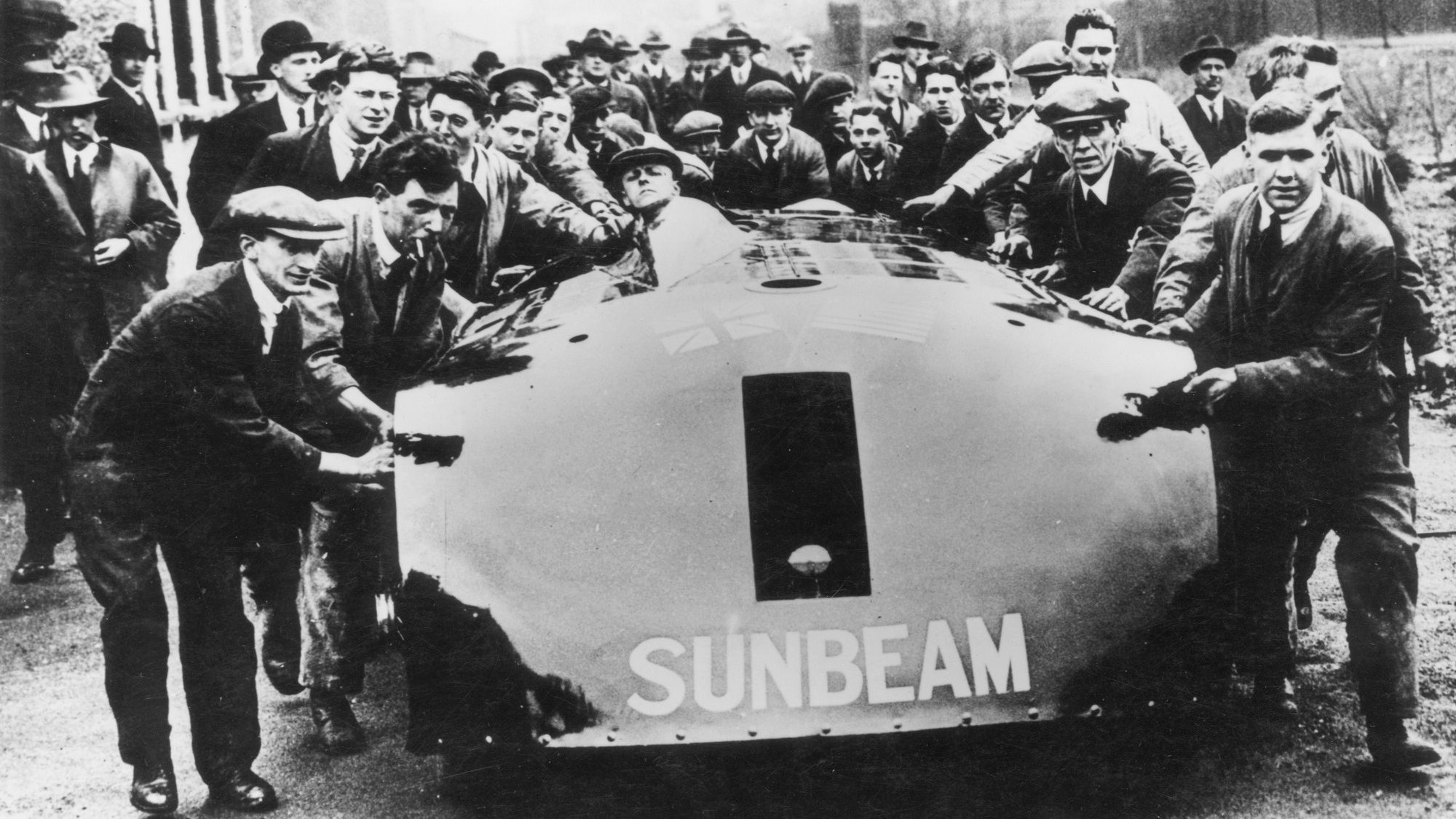They say that there’s no replacement for displacement, and it turns out that they knew that all the way back in 1927. That’s when Sunbeam stuck 45-liters-worth of engine into a car and sent it to Daytona Beach, Florida, where it became the first car to ever go 200 mph (322 km/h).
Now, the National Motor Museum in the UK has announced that it wants to restore the car, in order to have it ready to run for the 100th anniversary of its incredible record. To make that to be possible, it’s looking to raise £300,000 ($367,854 USD at current exchange rates).
To raise its profile, and to entice wealthy fans of motoring to donate to the project, the museum will be showing the car, affectionately known as “The Slug,” at car shows around the UK and Europe, as well as at museums across America.
Read: Team Vesco 444 “Little Giant” Broke The National EV Speed Record With 353 MPH
“This is a wonderfully exciting opportunity to raise the funds necessary to breathe new life into the two aero engines and enable the Sunbeam to run again,” said Michelle Kirwan, the National Motor Museum’s head of development. “To be able to take this iconic car back to Daytona, where world Land Speed Record history was made, would be incredible – especially in the centenary year.”
And the tour will likely work, because once the 1,000 hp car is seen, it is not easily forgotten. The car is powered by not one, but two 22.5-liter Sunbeam Matabele V12 engines. Arranged ahead of and behind the driver, they were wrapped in aerodynamic body work, which led to its nickname, The Slug.
In 1927, at Daytona Beach, in front of 30,000 people, Major Segrave drove the car to an average speed of 203.79 mph (327.96 km/h). That, despite strong winds on the first run causing the car to skid, and forcing Segrave to drive into the sea to slow it down.
The car has been with the National Motor Museum since 1970 (currently held in the “For Britain and For The Hell of It” display), but the engines’ internals have seized, and the car hasn’t run for the nearly 50 years.
Work has already begun on the car, whose rear engine was removed by the museum’s senior engineer, Ian Stanfield. The team wants to give the car the full restoration it richly deserves, so that it can return to Daytona Beach in 2027 for the 100th anniversary of its record-breaking run.















